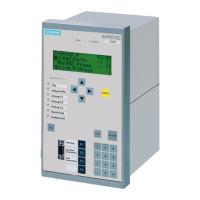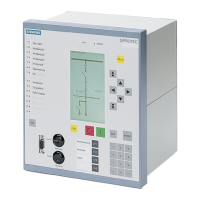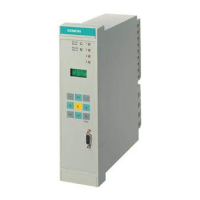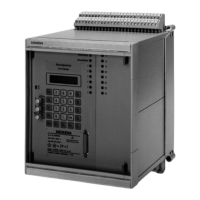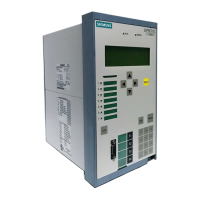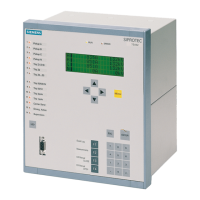2.17 Additional Functions
253
7SD610 Manual
C53000-G1176-C145-4
For the differential protection system of a protected object all fault records of all ends
are synchronized by time management features. This ensures that all fault records
operate with exactly the same time basis. Therefore equal measured values are coin-
cident at all ends.
The data can be retrieved via the serial interfaces by means of a personal computer
and evaluated with the operating software DIGSI and the graphic analysis software
SIGRA 4. The latter graphically represents the data recorded during the system fault
and calculates additional information such as the impedance or r.m.s. values from the
measured values. A selection may be made as to whether the currents and voltages
are represented as primary or secondary values. Binary signal traces (marks) of par-
ticular events, e.g. „fault detection“, „tripping“ are also represented.
If the device has a serial system interface, the fault recording data can be passed on
to a central device via this interface. Data are evaluated by appropriate programs in
the central device. Currents and voltages are referred to their maximum values, scaled
to their rated values and prepared for graphic presentation. Binary signal traces
(marks) of particular events e.g. „fault detection“, „tripping“ are also represented.
In the event of transfer to a central device, the request for data transfer can be exe-
cuted automatically and can be selected to take place after each fault detection by the
protection, or only after a trip.
2.17.8.2 Setting Notes
General Other settings pertaining to fault recording (waveform capture) are found in the
submenu Oscillographic Fault Records submenu of the Settings menu. Waveform
capture makes a distinction between the trigger instant for an oscillographic record
and the criterion to save the record (address 402 WAVEFORMTRIGGER). This param-
eter can only be altered using DIGSI at Additional Settings. Normally the trigger
instant is the device pickup, i.e. the pickup of an arbitrary protective function is as-
signed the time. The criterion for saving may be both the device pickup (Save w.
Pickup) or the device trip (Save w. TRIP). A trip command issued by the device
can also be used as trigger instant (Start w. TRIP), in this case it is also the saving
criterion.
An oscillographic fault record includes data recorded prior to the time of trigger, and
data after the dropout of the recording criterion. Usually this is also the extent of a fault
recording (address 403 WAVEFORM DATA = Fault event). If automatic reclosure is
implemented, the entire system disturbance — possibly with several reclose attempts
— up to the ultimate fault clearance can be stored (address 403 WAVEFORM DATA =
Pow.Sys.Flt.). This facilitates the representation of the entire system fault history,
but also consumes storage capacity during the auto reclosure dead time(s). This pa-
rameter can only be altered with DIGSI under Additional Settings.
The actual storage time begins at the pre-fault time PRE. TRIG. TIME (address 411)
ahead of the reference instant, and ends at the post-fault time POST REC. TIME (ad-
dress 412) after the storage criterion has reset. The maximum recording duration to
each fault MAX. LENGTH is set at address 410.
The fault recording can also be triggered via a binary input, via the keypad on the front
of the device or with a PC via the operation or service interface. The storage is then
dynamically triggered. The length of the fault recording is set in address 415 BinIn
CAPT.TIME (maximum length however is MAX. LENGTH, address 410). Pre-fault and
post-fault times will be included. If the binary input time is set for ∞, then the length of
the record equals the time that the binary input is activated (static), or the MAX.
LENGTH setting in address 410, whichever is shorter.
www . ElectricalPartManuals . com
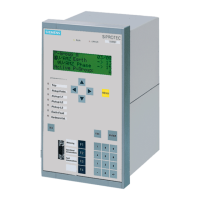
